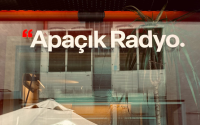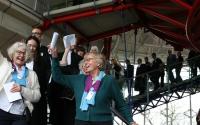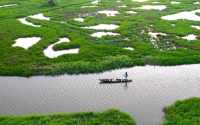The wildfires laying waste to southern California raged unabated yesterday as a third day of high winds and scorching temperatures pushed flames further into suburban communities and mountain towns, forcing the evacuation of 350,000 homes and destroying more than 1,000 buildings.
The US military joined the fire-fighting effort, sending in helicopters loaded with fire retardant after President George Bush declared a national state of emergency. California has already mobilised its state National Guard and said seven counties between the Mexican border and Santa Barbara were disaster zones.
The worst-affected areas include north-eastern San Diego County, where the so-called "Witch Fire" had burned 150,000 acres by last night and was racing westward towards the coast. In the mountain resort area of Lake Arrowhead, to the east of Los Angeles, the flames charged through tinder-dry forest and consumed nearly 200 buildings.
New blazes were being reported every few hours yesterday, including one near the Magic Mountain amusement park in Los Angeles County, and another at La Jolla Indian reservation in San Diego County.
The winds – which have reached hurricane force in some places – have made it virtually impossible to contain the inferno and given fire crews little option but to warn families in the path of the fires to flee and wait for the weather to change.
Emergency workers have fought to prevent the bush fires from crossing major roads. They lost that battle at Freeway 15 east of San Diego on Monday, and lost it again yesterday on Highway 18 in the San Bernardino mountains. In other areas they have been more successful, notably in Malibu, the upmarket beach community where the first blaze broke out on Sunday. A shift in wind direction kept flames bottled up in two sparsely-populated canyons yesterday – at least temporarily.
Fire crews from California are being aided by colleagues from around the country. Teams have flown in from Oregon and Nevada to join federal forestry workers, the military and National Guard. Experts said yesterday was the key day which would determine the ultimate extent of the disaster. The high winds are expected to ease today and the hot, seasonal desert breezes known as the Santa Anas are likely to disappear some time after that.
If the region is lucky, the winds will shift and the fires will not spread much further before they can be tackled. That, of course, is a daunting task because of the sheer size of the conflagration. If California is unlucky, tens of thousands of homes could go up in flames in the worst fire disaster in the state's history. "The winds continue to be unpredictable," Ron Roberts, the senior public official in San Diego County, warned last night. "That complicates matters."
The biggest threat was from the "Witch Fire", which wreaked havoc in the San Diego suburbs of Poway and Rancho Bernardo and was surging towards some of the city's most desirable neighbourhoods, including the idyllic, tree-lined Rancho Santa Fe and seafront resorts at Solana Beach and Encinitas. As it raced down the San Dieguito River valley, it had already covered half of the 35-mile distance from its origin to the ocean. "It's already half way there," said Maurice Luque, of the San Diego fire department. "We're expecting the worst."
Not everyone has obeyed the mandatory evacuation order but many who have are staying with friends or relatives or in hotels. About 15,000 people are sheltering in San Diego's Qualcomm Stadium or at the Del Mar Fairgrounds horse-racing track.
Even those not directly threatened by the flames are struggling with medical problems caused by the dramatic drop in air quality. The mayor of San Diego, Jerry Sanders, appealed yesterday for volunteer doctors and nurses to help cope with the influx of evacuees with respiratory problems, burns and other ailments.
In many areas, front lawns and parked cars are coated in soot and ash, and the sky has turned from its usual cobalt blue to a sickly shade of yellowish-brown. Most schools have closed but those still open are keeping children out of playgrounds to protect them from the acrid air.
Usually, wildfires start as a result of arson but this time it has been blamed on the winds knocking down electricity cables. Yesterday, 25,000 homes in Los Angeles alone were without power and the utility company Southern California Edison said it expected that number to grow as the fires continued to spread.
As the disaster became more serious, critics began accusing public planning authorities and other agencies of failing to do enough to contain the risk of wildfires in remote rural areas on the narrow coastal strip between the Santa Monica mountain range and the Pacific Ocean. Zev Yaroslavsky, an official in Los Angeles County, blamed the state Coastal Commission for doing too little to encourage brush clearance.
Bill Patzert, a prominent climatologist, said local authorities were to blame for authorising building in areas where none should ever have taken place. He reserved special criticism for officials in Malibu, where fires torch the mansions of Hollywood stars every two or three years. "Not one of those McMansions is worth the life of any firefighter," he said. "Whoever is handing out building permits in Malibu should be indicted."






